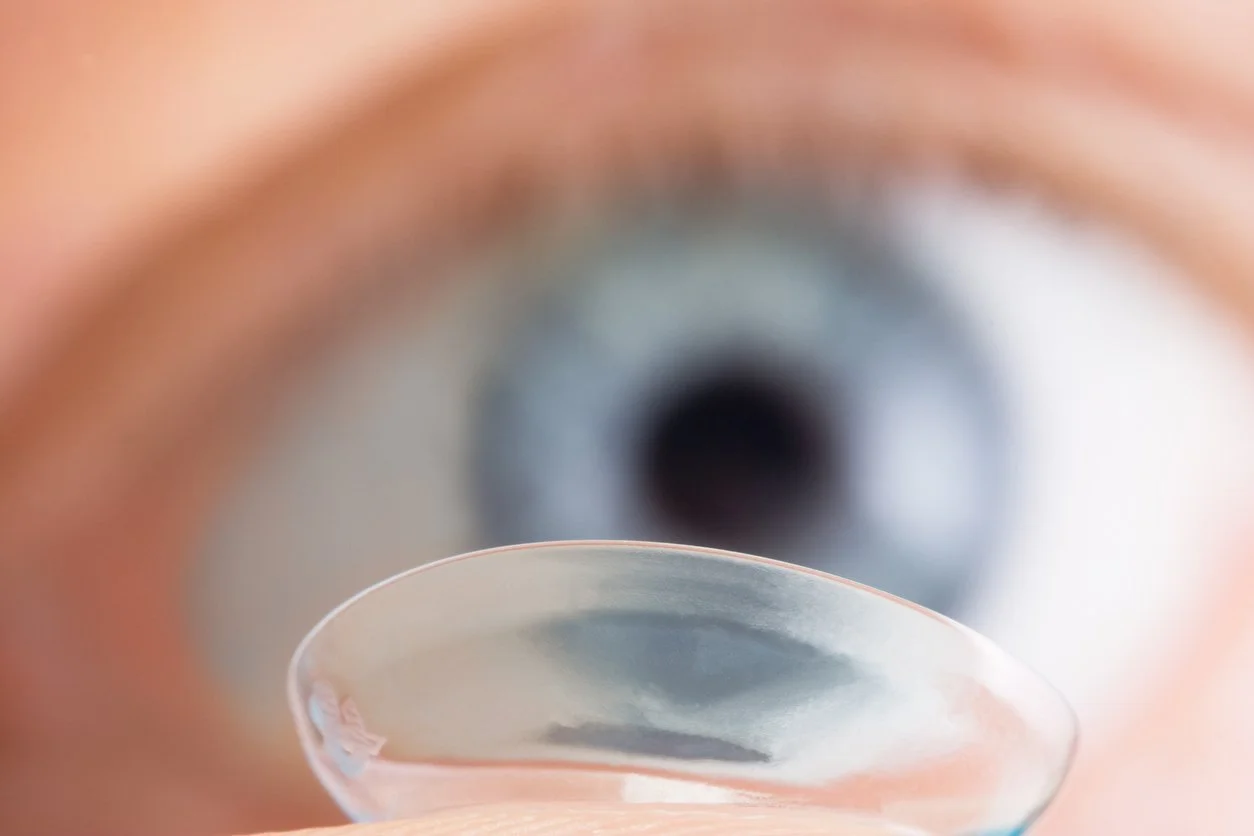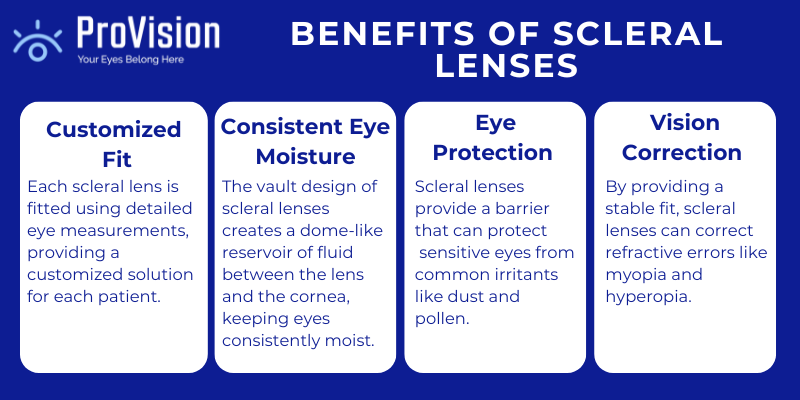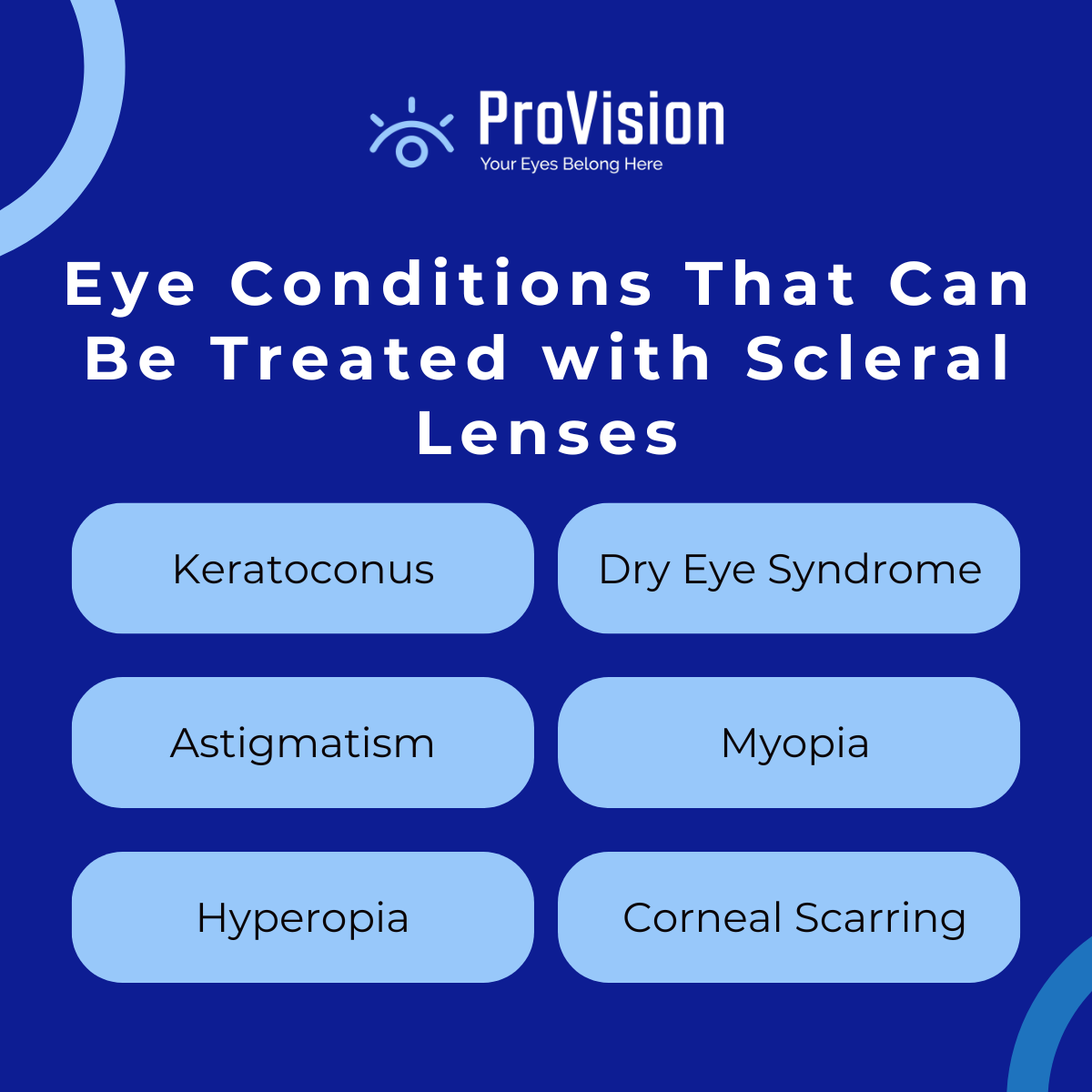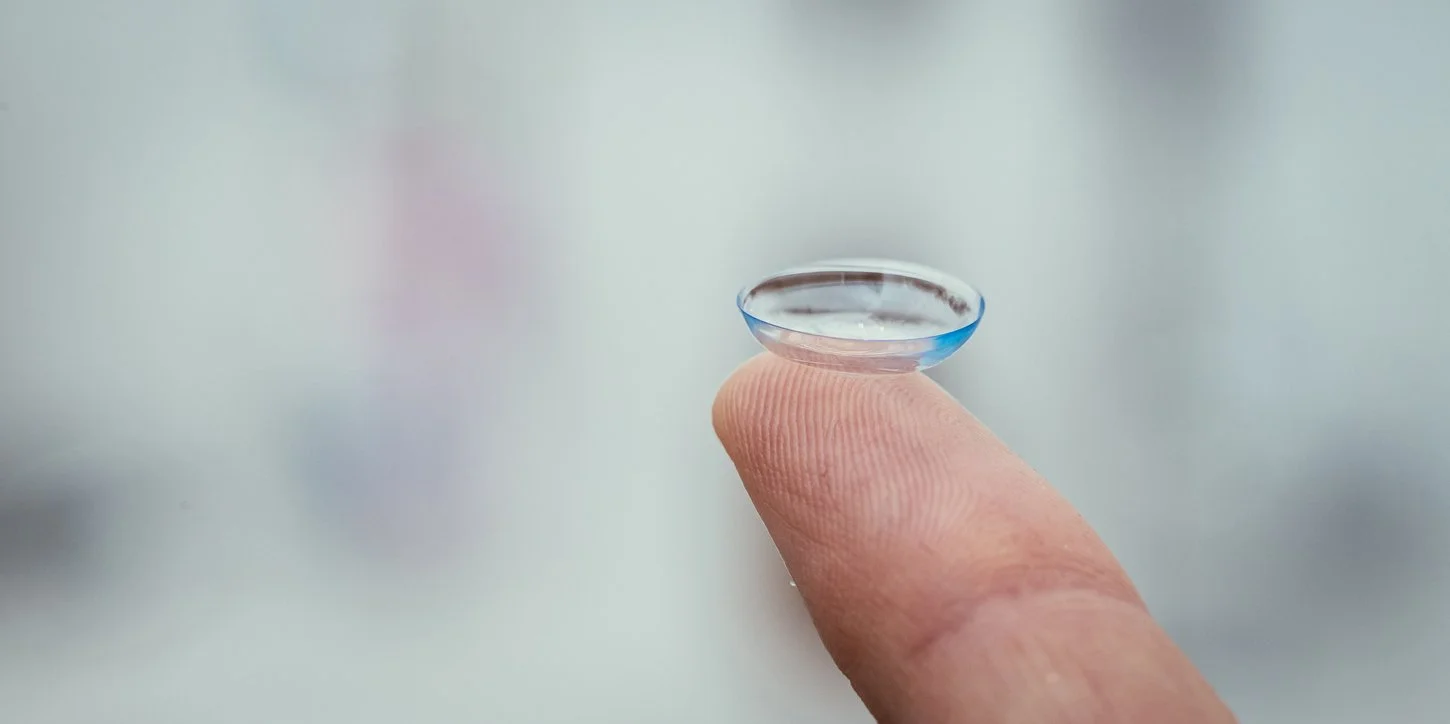What Are Scleral Contact Lenses and What Can They Do for Your Eyesight?
At a Glance: Scleral contact lenses are specialized gas-permeable lenses that vault over the cornea and rest on the white part of the eye (sclera). They create a protective fluid-filled dome that offers exceptional comfort and vision correction for various eye conditions.
Contact lens technology has evolved dramatically in recent decades, leading to innovations that help people with challenging vision needs. Among these advances, scleral contact lenses stand out as a remarkable solution. They extend beyond the cornea (the clear front part of your eye) to rest on the sclera (the white portion of your eye), creating a unique dome-like fluid reservoir. This distinctive design makes them different from traditional contact lenses that sit directly on the cornea.
Scleral lenses offer several advantages, including sharp vision correction, consistent eye moisture, protection for sensitive eyes, and comfort for people with irregular corneas. Scleral contacts offer a solution for conditions that make regular contact lenses uncomfortable, including keratoconus, severe dry eye, and other eye diseases and refractive errors.
Understanding Scleral Contact Lenses
Scleral contact lenses are larger than standard contacts and are made from highly oxygen-permeable materials that allow your eyes to breathe comfortably throughout the day.
Size and Structure
Scleral lenses cover a wider area than regular contact lenses. These larger-than-average lenses extend beyond the cornea to rest on the sclera. This larger diameter, typically ranging from 14 to 24 millimeters, allows the lens to form a dome over the entire cornea, creating a protective space between the lens and eye surface.
How Scleral Lenses Work
The vault design of scleral lenses creates a reservoir of tears between the lens and your cornea. This liquid chamber serves two important purposes: it keeps your eyes consistently moist and provides clear vision by smoothing out any irregularities in your corneal surface. The gas-permeable material allows oxygen to reach your eyes while providing durability and clear optics. The tear reservoir also makes these lenses particularly helpful for people with dry eyes or corneal conditions
Types and Customization
Scleral lenses come in multiple varieties to match different eye care needs:
Mini-Scleral Lenses: These are smaller in diameter than standard lenses and rest closer to the edge of the cornea. They work well for mild to moderate vision correction needs.
Corneo-Scleral Lenses & Semi-Scleral Lenses: The smallest types of scleral lenses, these rest on the eye where the cornea and sclera meet.
Full Scleral Lenses: Often used for more complex eye conditions like severe astigmatism or keratoconus, the large diameter of these lenses provides maximum coverage
Each scleral contact lens is custom-fitted using detailed measurements of your eye's shape and curvature, ensuring optimal comfort and vision correction for your specific needs. This combination of customized fit and advanced materials makes scleral lenses a comfortable solution for many people who couldn't wear traditional lenses successfully.
Who Can Benefit from Scleral Lenses?
If you struggle with standard contact lenses, scleral lenses could be a good option. The liquid chamber between the scleral lens and eye keeps the eye surface moist and comfortable. Their larger size and custom fit also mean better stability and fewer adjustments throughout the day. These specialized lenses help patients who haven't found success with traditional contact lenses or glasses for a variety of reasons.
People with Eye Conditions
Scleral lenses offer a stable fit that can consistently and effectively correct various vision problems. They can provide relief for people with several eye conditions and refractive errors, including:
Keratoconus: The most common type of corneal ectasia, this causes the cornea to become thin and cone-shaped. Patients find these lenses particularly helpful as they vault over the irregular cornea.
Dry Eye Syndrome: Those with severe dry eye syndrome and other ocular surface diseases benefit from the liquid reservoir these lenses create, providing constant moisture to the eye surface.
Corneal Scarring: These lenses can offer more comfortable vision for people with scarring from an eye injury or infection.
Astigmatism: Scleral lenses provide improved vision for these patients by creating a smooth optical surface over corneal irregularities.
Myopia & Hyperopia: People with nearsightedness (myopia) and farsightedness (hyperopia) can experience sharper vision through scleral lenses.
Complications of Refractive Surgery & Other Procedures: These lenses can treat irregular astigmatism and other side effects of surgeries like LASIK, Radial Keratotomy (RK), or a corneal transplant.
People with Eye Symptoms from Other Medical Conditions
For patients with diseases that affect the surface of the eye, scleral lenses can help alleviate symptoms and provide long-term vision protection.
Sjören's Syndrome: This autoimmune disorder causes the body's immune system to attack moisture-producing glands, including tear glands. This can cause chronic dryness and blurred vision.
Stevens-Johnson Syndrome: Typically caused by an allergic reaction to medications, this condition can create long-term eye symptoms like chronic dryness, irritation, and sensitivity to light.
Graft vs. Host Disease: This condition, which is caused by donated stem cells attacking the recipient’s body cells, can cause a dry or gritty feeling in your eyes.
Recreational, Environmental, & Occupational Factors
There are several other factors in a patient’s daily life that might affect their decision to get scleral lenses, such as:
Athletic Activity: Athletes and active individuals appreciate scleral lenses because they stay in place during movement and protect against dust and wind.
Climate: In dry, dusty environments, cold temperatures, and high altitudes, the lenses provide long-lasting moisture and shield eyes from environmental irritants.
Screen Time: Extended use of computer and phone screens becomes more manageable with the comfort and stability these lenses provide. Scleral contact lenses offer solutions for many people with different eye conditions and other specific vision needs.
The Fitting Process and Daily Care
Getting started with scleral lenses involves several steps to achieve the perfect fit. Your eye doctor will begin with a thorough eye examination to assess your vision needs and eye health. During this initial consultation, they'll take detailed measurements of your eye's surface using specialized equipment to map your cornea's shape and contours.
The fitting process typically includes a trial period where you'll test different lens designs. Your doctor will evaluate how the lens sits on your eye, checking the space between the lens and cornea, and making adjustments for optimal comfort and vision.
Insertion and Removal
Putting in scleral lenses requires a specific technique:
Completely fill the lens bowl with preservative-free saline solution
Look down and hold your upper eyelid open
Place the lens gently on your eye while keeping your head parallel to the floor
Slowly release your eyelids and blink
For removal, use your fingertip to gently press the lower edge of the lens while looking up and slightly in. The lens should pop out smoothly with light pressure.
Daily Care Instructions
Proper maintenance helps your scleral lenses last longer and stay comfortable:
Clean your lenses daily with an approved cleaner and rinse thoroughly with saline solution.
Never use tap water on your lenses.
Store your lenses in fresh contact lens solution each night in a clean case.
Replace your lenses according to your doctor's schedule, typically annually.
Keep your storage case clean and replace it every three months.
Always wash your hands thoroughly before handling your lenses.
For the best experience, follow your eye doctor's specific care instructions and attend all recommended follow-up appointments to monitor your eye health and lens fit.
Schedule a Scleral Consultation with ProVision Eye Associates
Scleral contact lenses offer remarkable benefits for people with various eye conditions, including keratoconus, severe dry eye, and corneal irregularities. These specialized lenses provide sharp vision, exceptional comfort, and healing protection for your eyes. The liquid reservoir they create between the lens and your cornea offers continuous hydration while maintaining stability during wear.
At ProVision Eye Associates, our experienced eye care team in Blue Bell, Pennsylvania will perform a thorough evaluation to determine if scleral lenses are right for you. During your scleral consultation, we'll take precise measurements of your eye's surface and discuss your specific vision needs. Dr. Kyle Capel has been fitting scleral lenses since 2015, and your custom-fitted lenses will be designed to match your unique eye shape for optimal comfort, clarity, and visual acuity.
Ready to explore how scleral lenses can improve your vision? Schedule your appointment by calling our office or booking online through our website. Our friendly staff will help you set up an appointment and answer any questions about what to expect during your visit.





